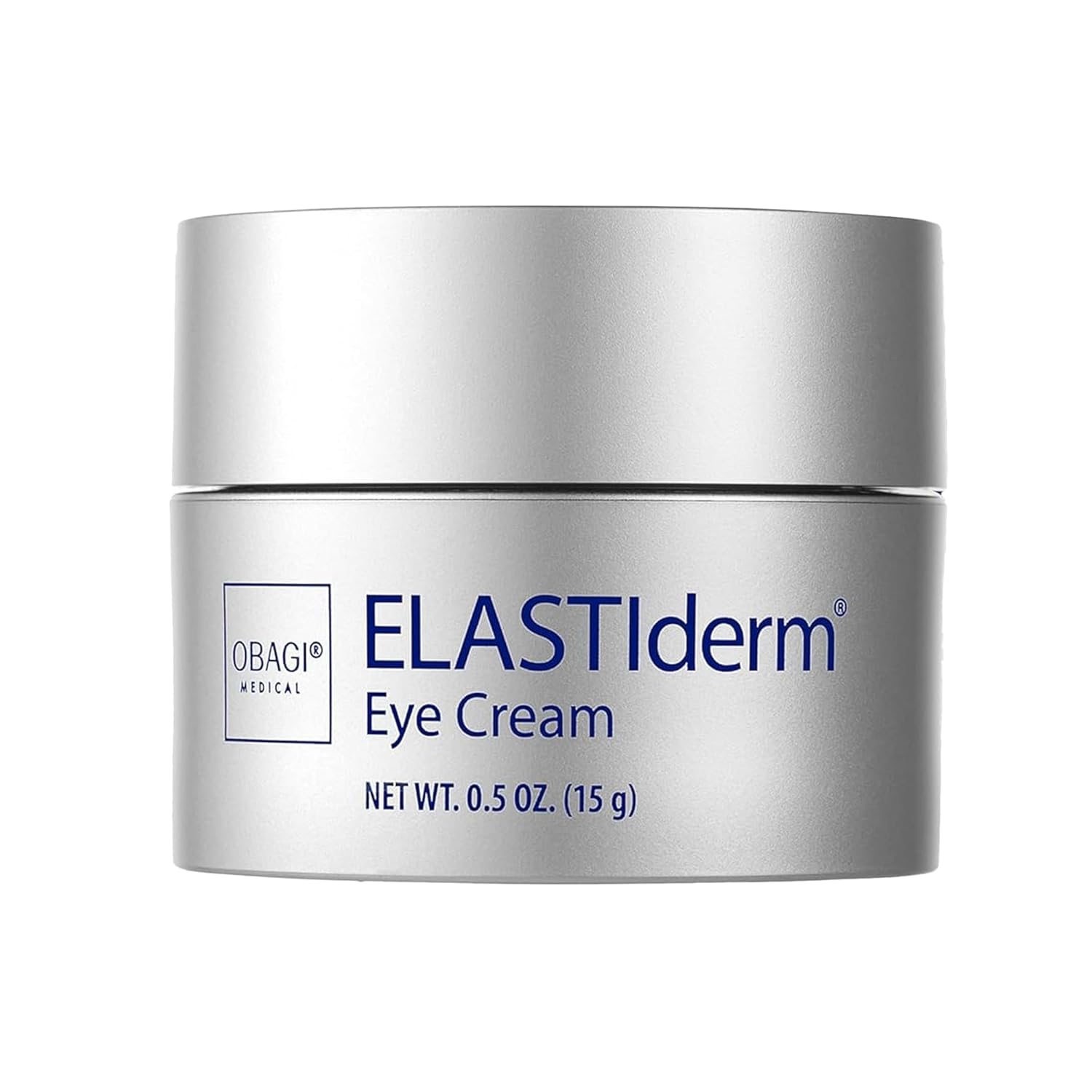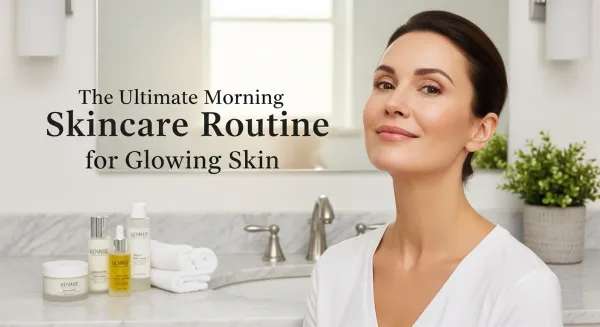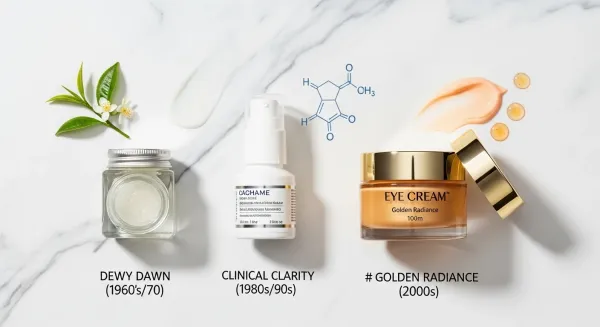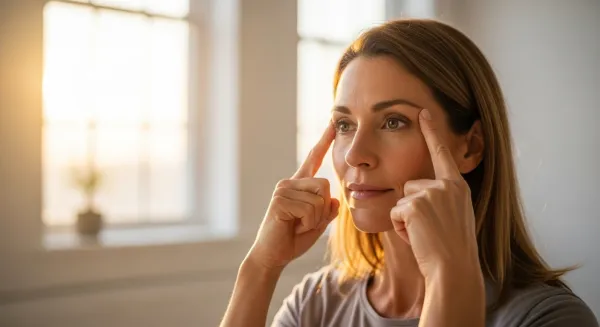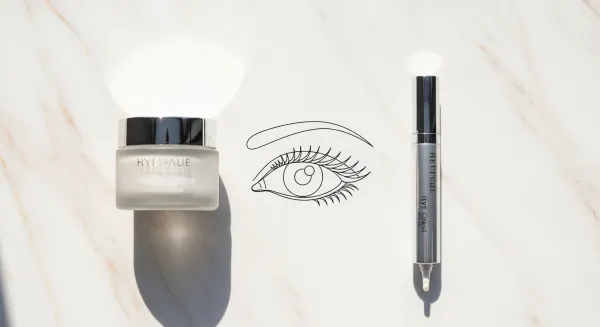5 Surprising Truths About Under-Eye Wrinkles (That Go Way Beyond Eye Cream)
Stop wasting money on eye creams that don't work. Learn the 5 science-backed truths about treating under-eye wrinkles—from peptides vs retinol to which professional treatments actually deliver results. Plus the ONE non-negotiable step dermatologists agree on.
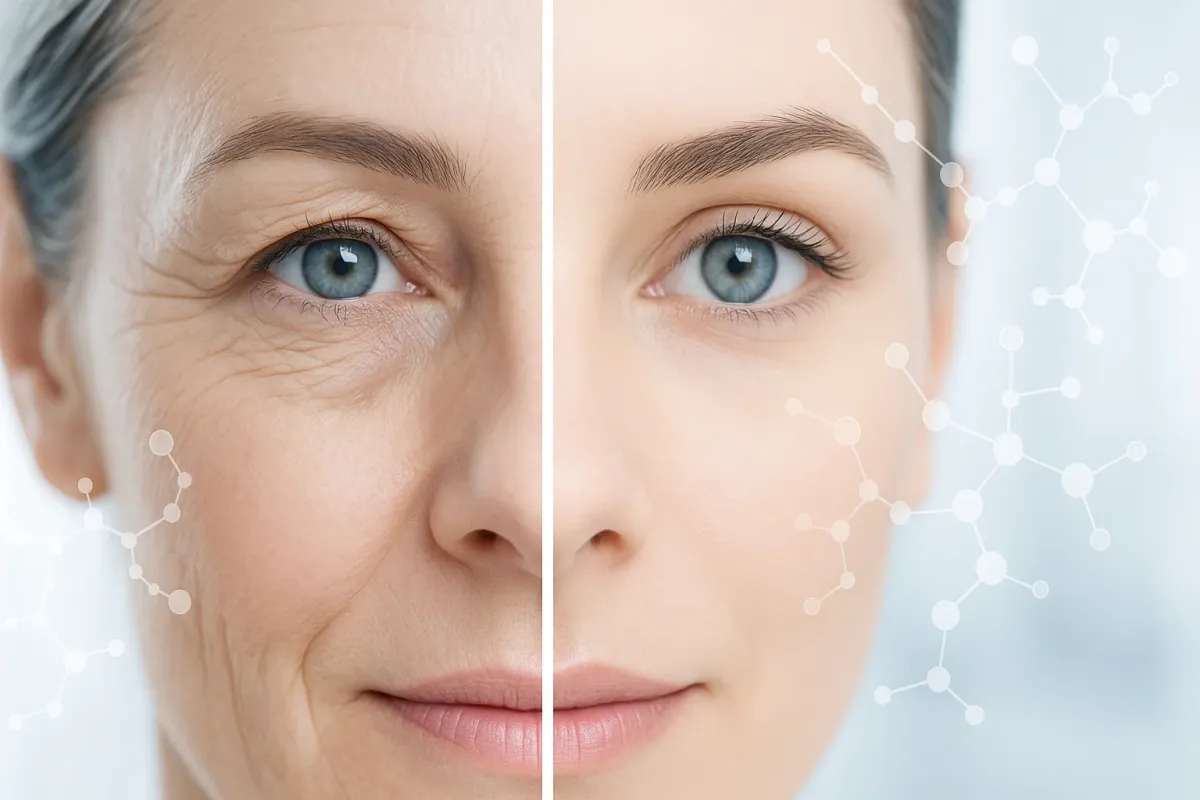
Look, I'm going to be straight with you. The skin around your eyes shows aging first. And the beauty industry? They're selling you a dream in a jar for $200.
Obagi ELASTIderm Eye Cream – Lightweight, Smooth Formula Clinically Proven to Help Reduce the Appearance of Fine Lines & Wrinkles
Eye wrinkles that go way beyond eye cream — Quick Summary
Quick picks
Eye wrinkles that go way beyond eye cream
- Use a broad‑spectrum mineral SPF 30–50 around the eyes daily to slow photo‑aging.
- Introduce a gentle retinoid (retinal/retinol) 2–3 nights per week to stimulate collagen.
- Layer a peptide‑rich serum (e.g., signal or copper peptides) under your regular moisturizer.
- Consider red/near‑infrared LED therapy 3–5× weekly for gradual texture improvement.
- Neuromodulators (e.g., Botox‑class treatments) can soften crow’s‑feet from muscle movement.
- Hyaluronic acid fillers can restore volume where hollowing deepens etched lines.
- Fractional lasers (ablative or non‑ablative) remodel collagen for finer skin texture.
- Radiofrequency microneedling tightens and smooths fine lines with minimal downtime.
- Protective habits—sunglasses, no rubbing, gentle cleansing—reduce mechanical wrinkling.
- Lifestyle basics—7–9 hours sleep, humidity 40–50%, allergy control, no smoking—support results.
Note: Start slowly and patch‑test near the eye area; seek professional advice if you have sensitive skin or ocular conditions.
Most of it is garbage.
This article is different. I'm going to give you the actual science from real dermatologists and studies. No fluff. No BS. Just what works.
Let's go.
Truth #1: Retinol Isn't the Only Game in Town (And It Might Not Be Right for You)
Everyone talks about retinol like it's the only answer. It's not.
Here's what nobody tells you: peptides might be better for most people.
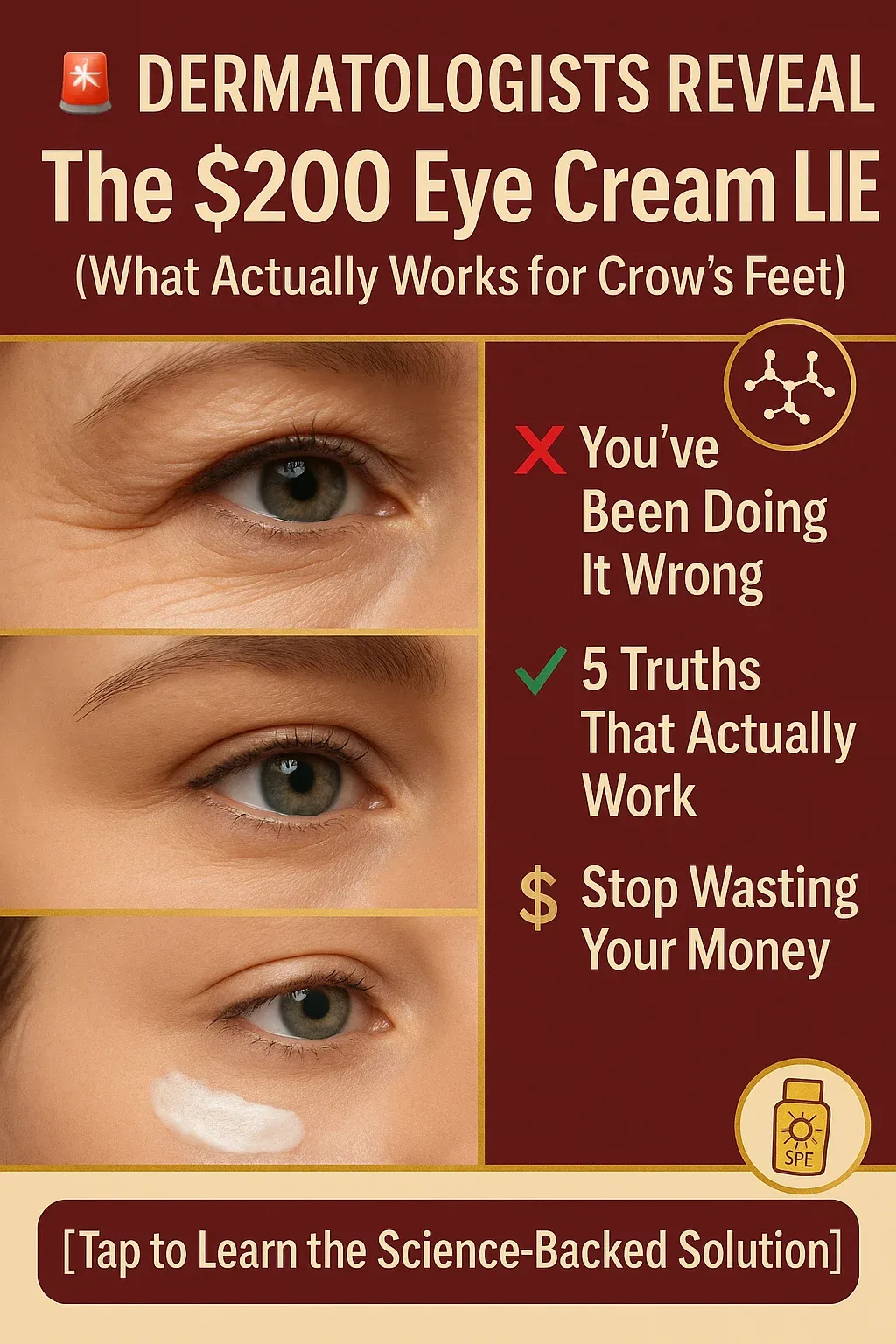
What Are Peptides?
- Short chains of amino acids
- Building blocks of collagen and elastin
- They tell your skin to repair itself
- Way less irritating than retinol
The Real Difference
| Feature | Retinol | Peptides |
|---|---|---|
| Speed of Results | Fast (2-4 weeks) | Slower (8-12 weeks) |
| How It Works | Surface-level cell turnover | Deep structural repair |
| Irritation Level | High (dryness, peeling) | Low to none |
| Best For | Significant sun damage, 35+ | Sensitive skin, prevention, under 35 |
| Long-Term Results | Good | Excellent |
Dr. Munir Somji breaks it down:
"Retinol delivers quicker surface-level changes and is highly effective for reducing the appearance of fine lines by boosting epidermal turnover. Peptides work deeper over time to support structural integrity and long-term firmness."
The Bottom Line
- Under 35 or sensitive skin? Start with peptides
- Over 35 with sun damage? Consider retinol
- Want both? Use peptides daily, retinol 2-3x per week
Don't just buy what Instagram tells you to buy. Match the ingredient to your actual problem.
Truth #2: All Wrinkles Are NOT the Same (This Changes Everything)
This is where most people screw up. They treat all wrinkles the same way. That's like using the same tool to fix a car and a computer.
There are TWO types of wrinkles:
Dynamic Wrinkles
- When they appear: Around age 30
- What causes them: Repetitive facial movements (squinting, smiling)
- When you see them: Only when you make expressions
- Best treatment: Botox (relaxes the muscles)
Static Wrinkles
- When they appear: Ages 40-50
- What causes them: Dynamic wrinkles that became permanent
- When you see them: ALL THE TIME (even with a blank face)
- Best treatment: Botox + fillers (relax + fill)
Why This Matters
Wrong treatment = wasted money. Period.
- Got dynamic wrinkles? Botox works amazing
- Got static wrinkles? You need fillers too, not just Botox
- Don't know which you have? Look in the mirror with a neutral face—if you still see lines, they're static
According to research from the American Academy of Dermatology, understanding your wrinkle type is the #1 factor in treatment success.
Truth #3: Professional Treatments Work in Only 3 Ways
When creams stop working, dermatologists have three main weapons. That's it. Three.
The 3 Mechanisms That Actually Work
Mechanism 1: RELAX the Movement
- Treatment: Botox injections
- How it works: Temporarily relaxes muscles that create wrinkles
- Duration: 3-4 months
- Best for: Dynamic wrinkles
- Downtime: None
Mechanism 2: FILL the Gap
- Treatment: Dermal fillers (hyaluronic acid)
- How it works: Plumps up the area from underneath
- Duration: 6-18 months depending on product
- Best for: Static wrinkles, volume loss
- Downtime: Minimal (possible bruising)
Bonus: Skin boosters use HA to hydrate deeply and trigger collagen production
Mechanism 3: RESURFACE the Skin
- Treatment: Laser treatments
- How it works: Stimulates new collagen production
- Best for: Overall texture, fine lines
Laser Comparison Table
| Laser Type | Intensity | Downtime | Results | Sessions Needed |
|---|---|---|---|---|
| Ablative (CO2, Erbium) | Aggressive | 5-10 days | Dramatic, long-lasting | 1-2 |
| Non-Ablative (Fraxel) | Gentle | 1-2 days | Gradual improvement | 3-5 |
Other Options Worth Knowing
- Microneedling: Triggers collagen with tiny needles
- BBL Therapy: Uses light to improve skin quality
The Mayo Clinic's guide to wrinkle treatments confirms these three mechanisms as the foundation of professional care.
Truth #4: Your Own Blood Might Be the Future (Yes, Really)
This sounds crazy but stick with me.
PRP (Platelet-Rich Plasma) therapy takes your own blood, spins it down, and injects the concentrated platelets back into your skin.
How PRP Works
- Draw your blood (like a normal blood test)
- Spin it in a centrifuge to concentrate platelets
- Inject the platelet-rich plasma into treatment areas
- Growth factors stimulate collagen and cellular repair
The Science (In Plain English)
- PRP contains growth factors that trigger tissue regeneration
- New research shows it might activate longevity pathways (like Sirtuin 1)
- Translation: It makes your cells act younger at a molecular level
The Honest Truth About PRP
Pros:
- Uses your own blood (super safe)
- Minimal side effects
- Stimulates natural repair processes
- Promising emerging science
Cons:
- Studies show mixed results so far
- Not as proven as Botox or fillers
- More expensive than some alternatives
- Needs more research
A recent meta-analysis on PRP effectiveness found no major difference versus control groups, but some evidence suggests potential benefits.
My take: It's safe and promising, but don't expect miracles yet. The science is still catching up.
Truth #5: None of This Matters If You Skip This ONE Thing
Here's the truth bomb: Everything we just talked about is worthless if you don't protect your skin from the sun.
I'm serious. Every dermatologist says the same thing. UV damage is the #1 cause of premature aging.
What UV Damage Does
- Breaks down collagen
- Destroys elastin
- Creates wrinkles faster than anything else
- Increases skin cancer risk
The Non-Negotiable Daily Routine
Every. Single. Day. No excuses.
- Apply broad-spectrum SPF 30+ sunscreen
- Include the eye area (most people skip this)
- Reapply every 2 hours if outdoors
- Add extra protection outdoors
- Polarized sunglasses with UV protection
- Wide-brimmed hat or UPF-rated hat
Dr. Adam Wallach says it perfectly:
"I cannot emphasize enough the importance of avoiding sun damage, not only for helping prevent skin cancer, but for its added benefit of avoiding photo-aging."
The ROI on Sunscreen
- Cost: $10-30 per bottle
- Time: 30 seconds per day
- Impact: Prevents thousands in future treatments
- Bonus: Reduces skin cancer risk by 40-50% according to the Skin Cancer Foundation
This is the highest ROI move you can make. Period.
Conclusion: Your Action Plan (Stop Reading, Start Doing)
Here's what actually works:
If You're Under 35
- Daily SPF 30+ (non-negotiable)
- Start with peptide serums
- Consider preventive Botox if family history shows early wrinkles
If You're 35-45
- Daily SPF 30+ (still non-negotiable)
- Add retinol 2-3x per week OR peptides daily
- Botox for dynamic wrinkles
- Consider non-ablative lasers for texture
If You're 45+
- Daily SPF 30+ (you know the drill)
- Retinol or prescription retinoids
- Botox + fillers for static wrinkles
- Ablative lasers for dramatic improvement
- Explore PRP if you want cutting-edge options
The Formula
Prevention (SPF) + Smart Actives (Peptides/Retinol) + Targeted Treatments (Botox/Fillers/Lasers) = Results
Stop buying random products because they have good packaging. Match the solution to your actual problem.
Now go look in the mirror. Figure out what type of wrinkles you have. And fix them the right way.
That's it. No BS. Just results.
Want to learn more? Check out the American Academy of Dermatology's aging skin resource center for more expert-backed information.
FAQ — eye wrinkles
Quick answers to the most asked questions.
Thin skin and time. Collagen and elastin drop after your 20s, so creases show faster. UV, smoking, squinting, and dehydration speed it up. Genetics and weight loss can deepen lines. You can slow it, not stop it.
Quick win: hydrate the area, then use a hyaluronic serum to plump. For movement lines, neuromodulators can soften crow’s feet in 3–7 days and last about 3–4 months. Retinoids build collagen but need 3–6 months of steady use. Daily SPF and sunglasses prevent backsliding.
Yes, when used right and in formulas made for the eye area. Start 2–3 nights per week with a pea-size for both eyes, avoid the lash line, and moisturize. Expect mild dryness; pause if you get stinging or redness and restart slower. Always wear SPF the next day.
They help fine lines and dryness; they won’t erase deep folds. Look for retinoids, peptides, hyaluronic acid, and antioxidants. Use them daily for 3–6 months before judging. SPF is the real needle-mover; no sunscreen, no progress.
Pick based on the wrinkle type. Botox targets crow’s feet from muscle movement. Fillers help hollows, not lines, when volume is the issue. Lasers, peels, and RF microneedling resurface and tighten over weeks. Talk options, risks, and costs with a qualified expert.

